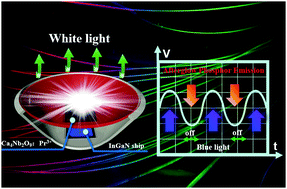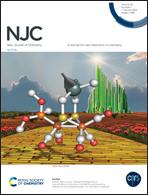Crystal structure, photoluminescence and afterglow properties of red-emitting phosphors Ca4Nb2O9:Pr3+ for AC-LEDs
Abstract
Alternating current light-emitting diodes (AC-LEDs) set up a new era of economic semiconductor-based lighting. However, the flicker of AC-LEDs in the AC cycles is unhealthy for human eyes. In this work, the red-emitting afterglow phosphor Ca4Nb2O9:Pr3+ was successfully synthesized via a traditional high temperature solid-state reaction method. The phase composition, photoluminescence spectra, afterglow curve, and thermoluminescence were investigated. It was revealed that the red emission (617 nm) is ascribed to the 3P0 → 3H6 transition of Pr3+ ions, and the afterglow time was in the second range after removal of the excitation source. In order to gain a deeper understanding of the origin of afterglow, a subsequent thermoluminescence analysis was performed and a relatively shallow trap within the host was found. These results indicated that Ca4Nb2O9:Pr3+ phosphors could compensate for the flickering behavior of AC-LEDs and may be a candidate for application in AC-LEDs.



 Please wait while we load your content...
Please wait while we load your content...